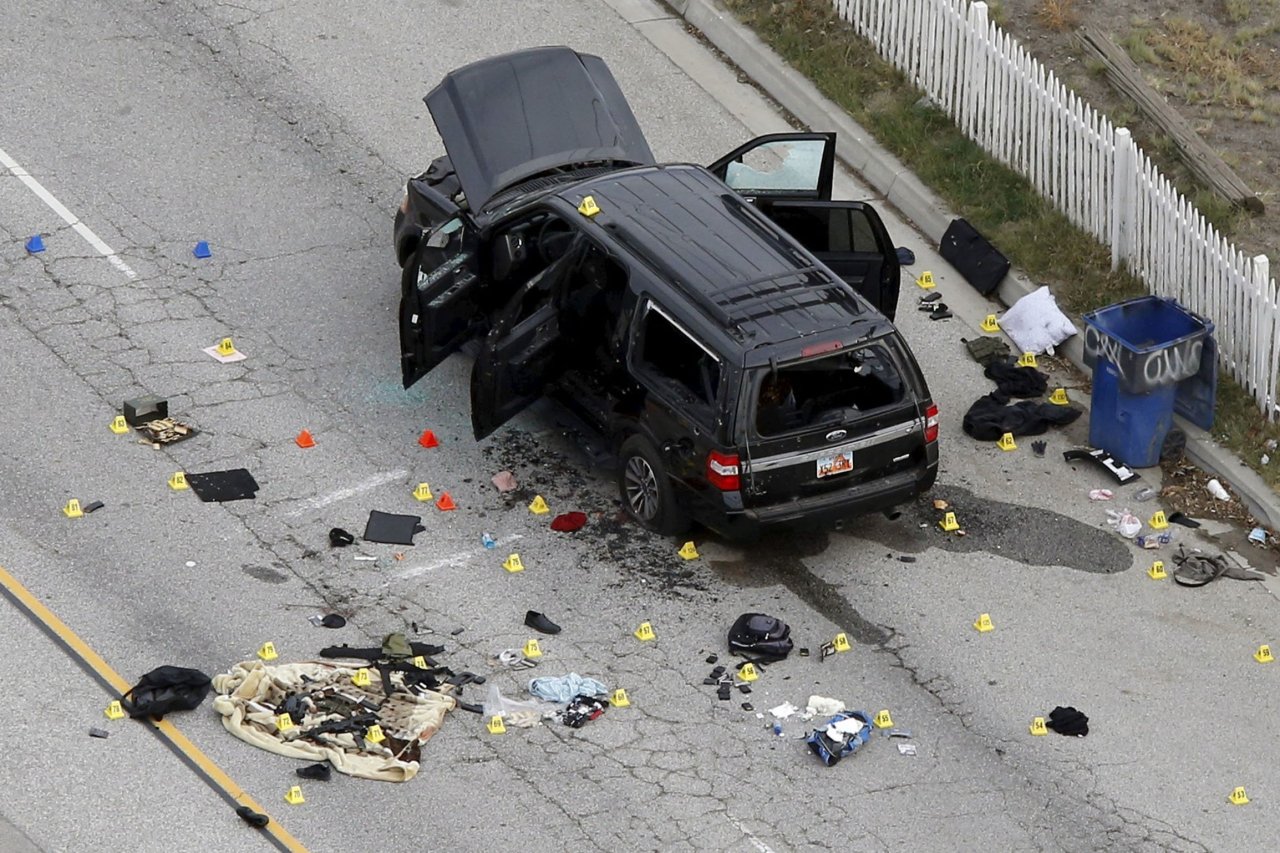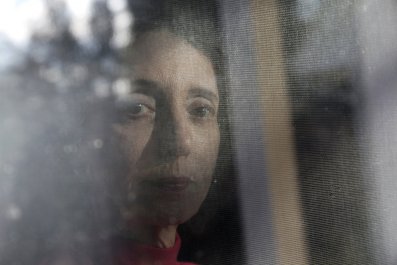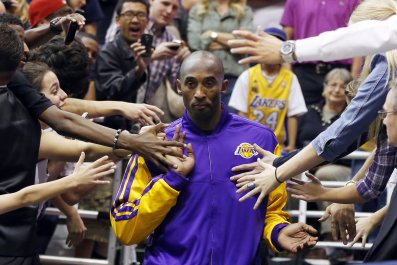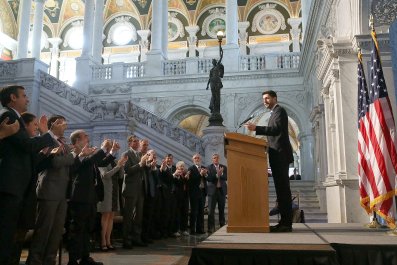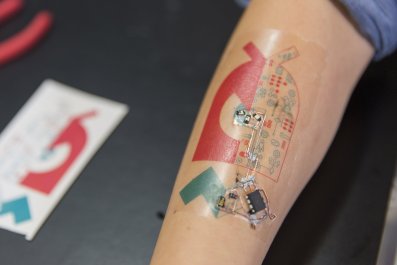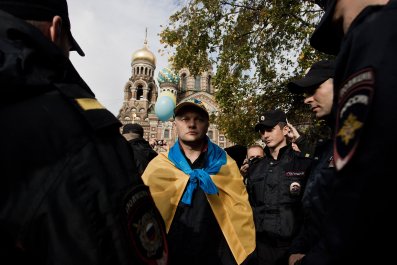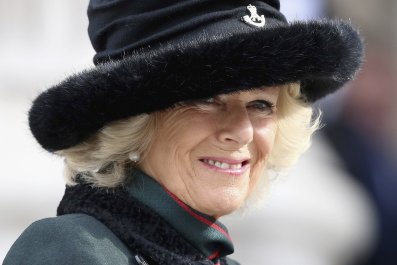In the immediate aftermath of the attacks on September 11, 2001, amid the shock, horror and sadness, the nation's law enforcement and intelligence services scrambled desperately to assess the capabilities and intentions of an enemy that had just revealed itself in nightmarishly spectacular fashion. Two scenarios filled them with dread: first, a follow-up attack using weapons of mass destruction—nuclear, biological or chemical. The obsessive determination to prevent that had enormous consequences. Most obviously, it led the U.S. into a disastrous war in Iraq, but to date, mercifully, the effort has succeeded.
The second scenario—viewed at the time as more likely—was a series of assaults not on iconic symbols of American power but on the ordinary places people go to routinely: a pipe bomb going off at the Mall of America outside of Minneapolis; a lone shooter opening fire at a high school football game in Ohio; a suicide bomber detonating himself at an evangelical megachurch outside Houston. In the wake of September 11, the psychological impact of such an attack would have been devastating. It would have said, in no uncertain terms: We can hit you anywhere, at any time. And in so doing, we can bring your way of life to a halt. "We lost a lot of sleep over that one too," Dale Watson, then a senior counterterrorism official at the FBI, said at the time.
Related: Who's to Blame for the United States of Hate?
It took 14 years for it to happen, but happen it did. On December 2, at a holiday party in San Bernardino, a city about an hour east of Los Angeles. Fourteen dead, 21 wounded—and had a planted bomb detonated, the casualties could have been much worse.
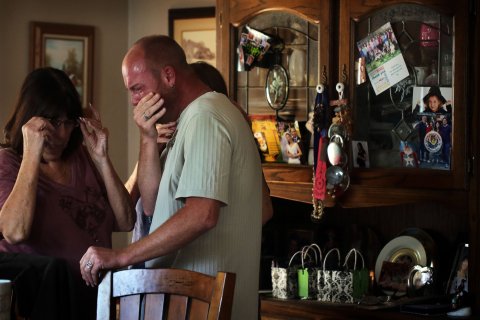
Terror's new face had revealed itself in America. A young Muslim couple seen as unremarkable by co-workers and friends alike, who had "self-radicalized," assembled a small armory of weapons and pledged allegiance to the Islamic State militant group (ISIS)—all without the FBI or local law enforcement catching a whiff of it.
Syed Farook and Tashfeen Malik may not have been recruited by ISIS and were (until the moment they started shooting) "sympathizers" rather than fighters. But for all that, the FBI had seen them coming. Not Farook and Malik specifically but the threat they came to embody. For months now, officials from the FBI and the Department of Homeland Security have been testifying about the potential danger of "lone wolf attacks" by "homegrown violent extremists" and how difficult it is to track and deter them. Consider how grimly prescient FBI Director James Comey sounded in congressional testimony earlier this fall: "These individuals present unique challenges because they do not share the profile of an identifiable group. Their experience and motives are often distinct, but they are increasingly savvy and willing to act alone. They may gain inspiration from terrorist narratives, including material in English; events in the United States or abroad perceived as threatening to Muslims; the perceived success of other HVE plots, such as the November 2009 attack at Fort Hood; or their own grievances."
Related: Company Prosper Loaned Over $28K to San Bernardino Shooter: Report
The deadliest attack on American soil since September 11—and the sense that more may be coming—forced President Barack Obama to deliver on December 6 a speech from the Oval Office meant to reassure a rattled country, to convince us there is a way to defend the homeland and defeat ISIS. Obama, of course, does not want to be a wartime president. He has wanted—and in fact has been—an anti- war president, getting U.S. troops out of Iraq, scaling back significantly in Afghanistan and balking at getting involved in Syria (after drawing a "red line" that Syrian dictator Bashar al-Assad then crossed). And many of his public utterances about the "war on terror"—a term his White House has avoided—have been, to be kind, unfortunate. He infamously called ISIS a "JV" team in 2014. On the morning of the ISIS attacks in Paris last month, he said the group had been "contained." And just before Thanksgiving, he sought to reassure Americans that, in the wake of Paris, the administration knew of no credible attack threats.
The substance of his December 6 speech was unremarkable and predictable: an intensifying air campaign against ISIS; more effort from allies post-Paris; tightening up visa requirements at home; a plea for more effective gun control laws to make it more difficult for militant group sympathizers like Farook and Malik to buy heavy weaponry; and no plans for significant ground troops in Syria or Iraq, but special operations forces already deployed will help "accelerate" offensives against ISIS safe havens.
But a question the president acknowledged in his speech resonated, both because it was the right question and because the truthful answer is not one anyone wants to hear. " I know," Obama said, "that after so much war, many Americans are asking whether we are confronted by a cancer that has no immediate cure." He answered that we will "overcome" the threat terrorism poses but wisely avoided a time frame, because the honest answer is that there is no immediate cure for this cancer. Since September 11, the war on terror has been called "the long war'' because that's what it is. Fourteen years after the 9/11 attacks, the reality of homegrown, self-radicalized ISIS or Al-Qaeda sympathizers is now as obvious to everyone as it was to Comey and his colleagues before December 2.

And one of the pivotal questions—perhaps the pivotal question in the wake of the San Bernardino attack—again conjures up the ultimate terrorist nightmare, just as the attacks on September 11 did: Does the presence of self-radicalizers (the FBI had, before December 2, more than 1,000 individuals on its watch list) make it easier for ISIS or Al-Qaeda to execute an attack in this country using a weapon of mass destruction (WMD)? (We know, at minimum, that ISIS has chemical weapons captured from the Syrian army.) Are there HVEs with the know-how to make and detonate a dirty bomb?
Related: American Muslim Organizations Condemn San Bernardino Shooting
Intelligence and law enforcement officials must now deal with those questions every day. The signal success of both the Bush and Obama administrations has been to prevent a mass-casualty WMD attack on U.S. soil. But a WMD attack is complicated. It involves a lot of moving parts and matériel that is not easy to come by. And the success thus far in deterring such an assault once again made it seem like a remote possibility.
Shooters walking into a holiday party and unloading their clips is not a remote occurrence. If it can happen in San Bernardino, it can happen anywhere. That is the message Farook and Malik, an anonymous and innocuous couple before December 2, intended to deliver. That they succeeded marks a new and terrifying phase of a war that is not going away.



